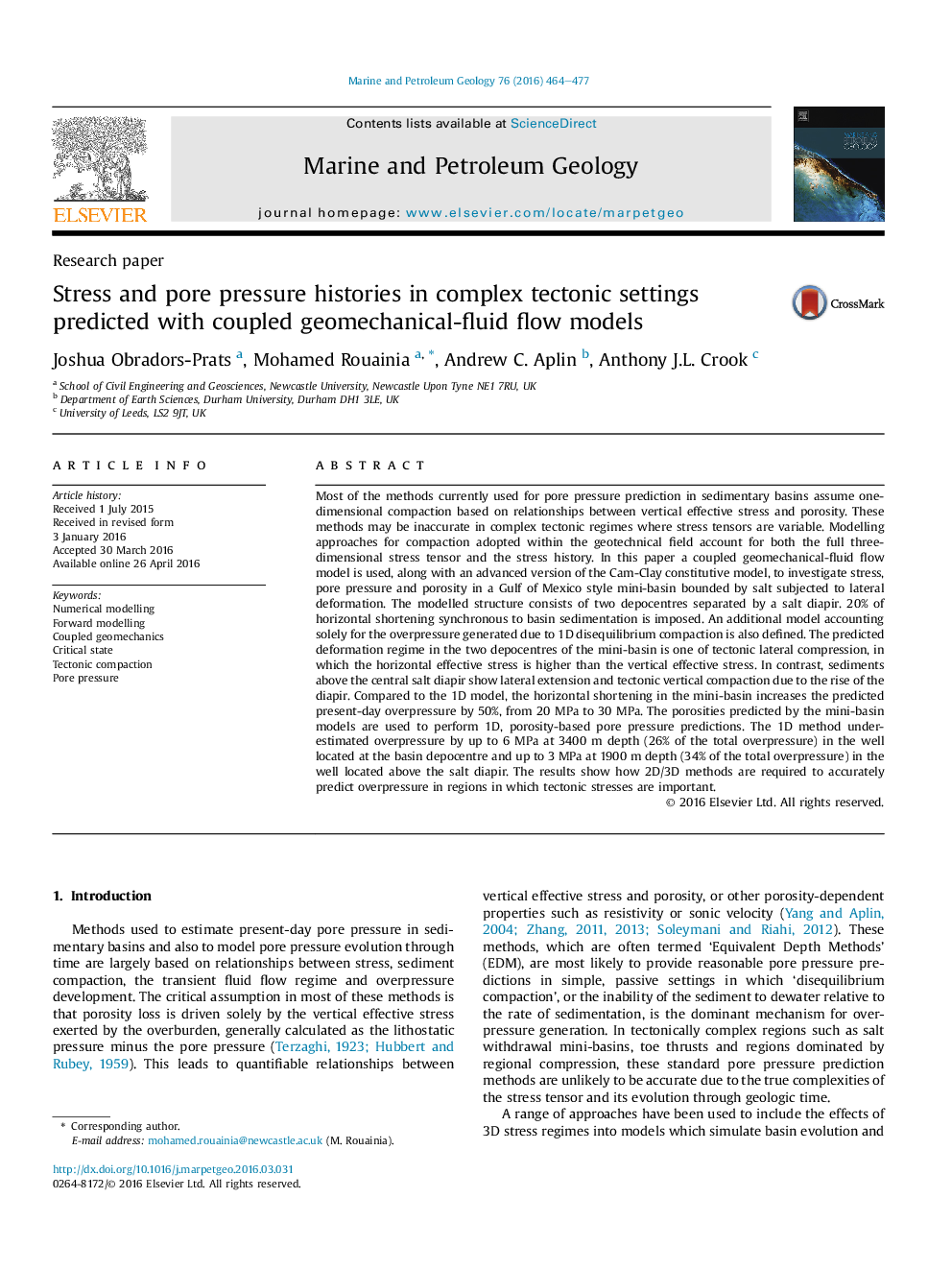| کد مقاله | کد نشریه | سال انتشار | مقاله انگلیسی | نسخه تمام متن |
|---|---|---|---|---|
| 6434764 | 1637151 | 2016 | 14 صفحه PDF | دانلود رایگان |
- A coupled geomechanical model is used to investigate overpressure in complex tectonic regimes.
- A Gulf of Mexico style mini-basin bounded by salt subjected to lateral deformation is analysed.
- The porosities predicted by the mini-basin models are used to perform 1D pore pressure predictions.
- It is found that the 1D method underestimated overpressure.
- 2D/3D methods are required to accurately predict overpressure in tectonic regions.
Most of the methods currently used for pore pressure prediction in sedimentary basins assume one-dimensional compaction based on relationships between vertical effective stress and porosity. These methods may be inaccurate in complex tectonic regimes where stress tensors are variable. Modelling approaches for compaction adopted within the geotechnical field account for both the full three-dimensional stress tensor and the stress history. In this paper a coupled geomechanical-fluid flow model is used, along with an advanced version of the Cam-Clay constitutive model, to investigate stress, pore pressure and porosity in a Gulf of Mexico style mini-basin bounded by salt subjected to lateral deformation. The modelled structure consists of two depocentres separated by a salt diapir. 20% of horizontal shortening synchronous to basin sedimentation is imposed. An additional model accounting solely for the overpressure generated due to 1D disequilibrium compaction is also defined. The predicted deformation regime in the two depocentres of the mini-basin is one of tectonic lateral compression, in which the horizontal effective stress is higher than the vertical effective stress. In contrast, sediments above the central salt diapir show lateral extension and tectonic vertical compaction due to the rise of the diapir. Compared to the 1D model, the horizontal shortening in the mini-basin increases the predicted present-day overpressure by 50%, from 20 MPa to 30 MPa. The porosities predicted by the mini-basin models are used to perform 1D, porosity-based pore pressure predictions. The 1D method underestimated overpressure by up to 6 MPa at 3400 m depth (26% of the total overpressure) in the well located at the basin depocentre and up to 3 MPa at 1900 m depth (34% of the total overpressure) in the well located above the salt diapir. The results show how 2D/3D methods are required to accurately predict overpressure in regions in which tectonic stresses are important.
Journal: Marine and Petroleum Geology - Volume 76, September 2016, Pages 464-477
